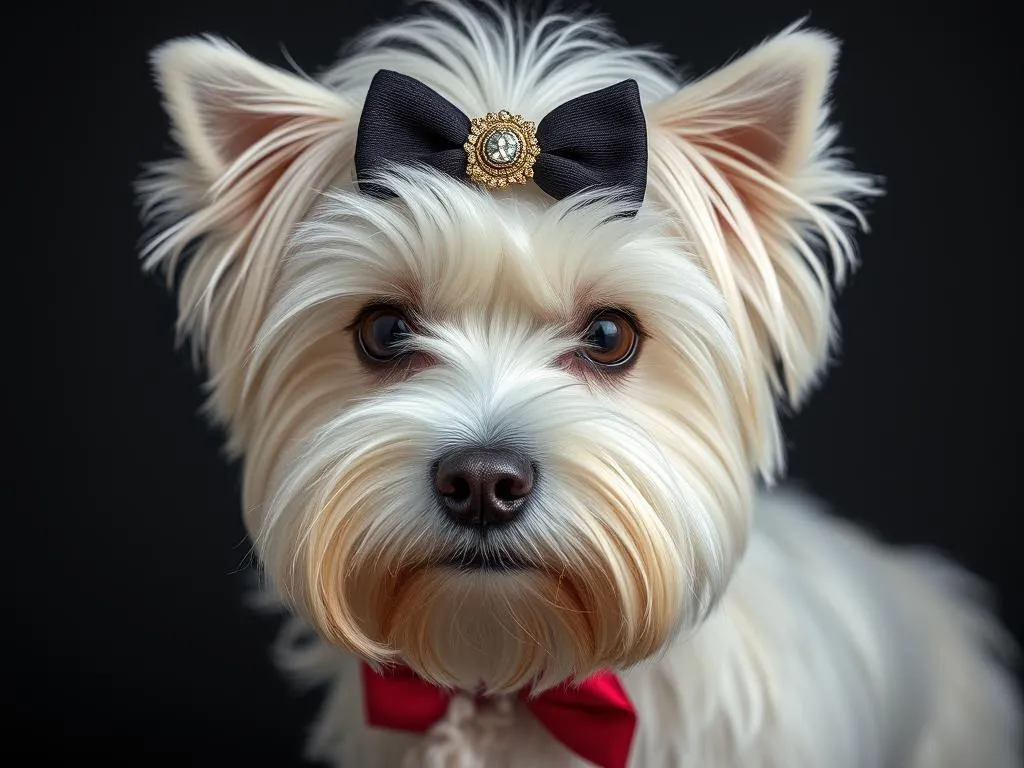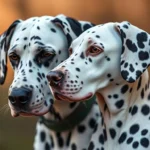
Grooming is essential for Maltese dogs, not only for aesthetic purposes but also for their overall health and well-being. The Maltese breed, with its long, luxurious coat, requires regular grooming to prevent matting and skin issues. This article will delve into how to groom a Maltese, covering essential tools, step-by-step grooming techniques, and tips for maintaining a healthy coat.
Understanding the Maltese Breed
Characteristics of Maltese Dogs
Maltese dogs are small, typically weighing between 4 to 7 pounds and standing about 8 to 10 inches tall. They have a distinctive long, flowing white coat that is soft and silky. Their small size makes them ideal companions, and they are known for their playful and affectionate nature. Maltese dogs are intelligent and eager to please, making them relatively easy to train, though they can also be quite stubborn at times.
Common Health Issues in Maltese
Maltese dogs can be prone to specific health concerns, including dental issues, skin allergies, and eye problems. Regular grooming plays a crucial role in preventing some of these health problems. For instance, brushing their teeth and cleaning their ears during grooming can help avoid dental disease and ear infections. Furthermore, proper grooming can help identify skin allergies or irritations early, ensuring prompt attention and treatment.
Essential Grooming Tools for Maltese
Brushes and Combs
Using the right brushes is vital for maintaining the Maltese coat. Here are two types of brushes that are highly recommended:
-
Slicker Brushes: These are excellent for removing mats and tangles from the coat. The fine, short wires help reach down to the undercoat, making it easier to keep the coat free from debris.
-
Pin Brushes: These are perfect for finishing touches as they can help smooth the coat and add shine. The rounded tips on the pins prevent irritation to the dog’s skin.
Additionally, having a wide-tooth comb on hand is essential for detangling stubborn mats without pulling on the hair.
Grooming Scissors and Clippers
Investing in quality grooming scissors and clippers can make a significant difference in the grooming process:
-
Straight Scissors: Ideal for trimming the coat to a desired length.
-
Curved Scissors: Best for shaping and trimming around the face and paws.
-
Thinning Shears: Useful for blending and thinning the coat, especially in areas that require a more natural look.
When it comes to clippers, look for those with adjustable blades. This allows you to customize the length of the coat as needed.
Bathing Supplies
Bathing your Maltese is an essential part of the grooming process. Consider the following items:
-
Shampoos and Conditioners: Choose products specifically formulated for dogs, preferably those designed for sensitive skin. Look for oatmeal-based shampoos to help soothe irritated skin.
-
Towels: Microfiber towels are great for absorbing moisture quickly without causing static in the coat.
-
Dog Dryers: A high-velocity dog dryer can effectively dry the coat without damaging it, especially in the colder months.
Step-by-Step Guide on How to Groom a Maltese
Preparing for Grooming
Before you start grooming, create a comfortable space where your Maltese feels safe. Gather all your tools and materials to ensure a smooth grooming session. A non-slip mat can help keep your dog secure, and treats can be used as positive reinforcement throughout the grooming process.
Brushing the Coat
To brush your Maltese effectively:
-
Start Slowly: Begin by gently brushing areas where your dog is comfortable, such as the back or sides.
-
Use the Slicker Brush: Work your way through the coat systematically, starting from the roots and moving toward the tips.
-
Tackle Tangles: If you encounter tangles, hold the base of the hair near the skin to avoid pulling and use your wide-tooth comb to gently detangle.
-
Finish with a Pin Brush: Once the coat is free of tangles, use a pin brush to smooth it out and add shine.
Bathing the Maltese
Bathing your Maltese should be done every 4 to 6 weeks, depending on their activity level and coat condition. Here’s how to bathe them effectively:
-
Prepare the Bath: Use lukewarm water in a tub or sink. Ensure that the area is free of drafts.
-
Wet the Coat: Gently wet the coat, avoiding the eyes and ears. Use a cup or a sprayer for better control.
-
Apply Shampoo: Use a small amount of dog shampoo, lathering it into the coat thoroughly, and rinse well to avoid residue.
-
Condition: Follow with a dog conditioner to help maintain coat moisture and softness.
-
Rinse Again: Ensure all product is thoroughly rinsed out to prevent itching.
Trimming and Clipping
Regular trimming helps maintain a healthy appearance. Here’s how to do it:
-
Face and Eye Area: Carefully trim around the eyes and face using straight scissors to avoid cutting the skin.
-
Paws: Trim the hair around the paws to give a neat appearance and prevent debris from getting trapped.
-
Body: Use clippers or scissors to trim the body coat to your desired length, ensuring evenness.
-
Ears: Trim the hair inside the ears carefully to prevent matting and improve airflow.
Nail Clipping and Ear Cleaning
Nail care and ear cleaning are vital for your Maltese’s overall health:
-
Nail Clipping: Use dog nail clippers and trim just the tip of each nail to avoid hitting the quick. It’s best to do this every 3 to 4 weeks.
-
Ear Cleaning: Use a vet-recommended ear cleaner on a cotton ball to gently wipe the inside of the ears. This helps prevent infections and buildup.
Grooming Frequency and Schedule
How Often to Groom a Maltese
Maltese dogs require regular grooming to keep their coat in top condition. Here’s a suggested grooming schedule:
-
Daily brushing: Essential for preventing mats and tangles.
-
Bathing: Every 4 to 6 weeks, depending on coat condition.
-
Trimming: Every 6 to 8 weeks, or as needed.
Signs That Your Maltese Needs Grooming
Watch for these indicators that it’s time for a grooming session:
-
Visible Mats or Tangles: If you can see mats forming, it’s time to brush.
-
Odor: A noticeable smell may indicate it’s time for a bath.
-
Overgrown Nails: If you hear clicking sounds when your dog walks, it’s likely time for a nail trim.
Professional Grooming vs. DIY Grooming
When to Consider Professional Grooming
While grooming at home is beneficial, certain situations may require professional help:
-
Severe Matting: If your Maltese has severe mats, a professional groomer can safely address them.
-
Nervous Dogs: Some dogs may feel more comfortable with a professional groomer, especially if they are anxious during grooming.
Cost Considerations
Professional grooming can vary in price, typically ranging from $40 to $100, depending on the services required and your location. Regular grooming can be a significant expense, especially if you opt for full grooming services frequently.
DIY Grooming Benefits
There are numerous benefits to grooming your Maltese at home:
-
Cost Savings: Reducing the frequency of professional grooming can save you money in the long run.
-
Bonding Time: Grooming at home allows you to spend quality time with your Maltese, strengthening your bond.
-
Customization: You can customize the grooming process to suit your dog’s specific needs and preferences.
Nutrition and Health Care for a Healthy Coat
Importance of Diet
A healthy diet is crucial for maintaining a shiny coat and healthy skin. Look for high-quality dog food that includes:
-
Omega Fatty Acids: These promote skin health and a shiny coat.
-
Vitamins and Minerals: Essential nutrients help support overall health.
Regular Veterinary Check-ups
Routine check-ups with your veterinarian ensure that your Maltese remains healthy. These check-ups can help identify any underlying health issues that may affect grooming, such as skin allergies or dental problems.
Conclusion
Grooming is an integral part of caring for your Maltese dog. It not only enhances their appearance but also contributes significantly to their health and well-being. Establishing a regular grooming routine can prevent many health issues and help maintain a happy, healthy, and well-groomed Maltese. Remember to be patient and gentle during the grooming process, and always reward your dog with treats and affection to create a positive experience.
FAQs
What is the best way to prevent matting in a Maltese?
Regular brushing is the most effective way to prevent matting. Daily attention to their coat can stop tangles from forming and keep their fur looking its best.
How can I tell if my Maltese is stressed during grooming?
Signs of stress in a Maltese may include excessive whining, trying to escape, panting, or trembling. If you notice these signs, take a break and try again later.
What should I do if I accidentally cut my Maltese’s skin while grooming?
If you accidentally cut your Maltese’s skin, apply gentle pressure with a clean cloth to stop any bleeding. If the bleeding doesn’t stop or the cut looks serious, contact your veterinarian for advice.
How can I make grooming a positive experience for my Maltese?
Ensure that grooming sessions are short and enjoyable. Use treats and praise throughout the process to reinforce positive behavior, and consider playing with your Maltese afterward to create a pleasant association with grooming.









